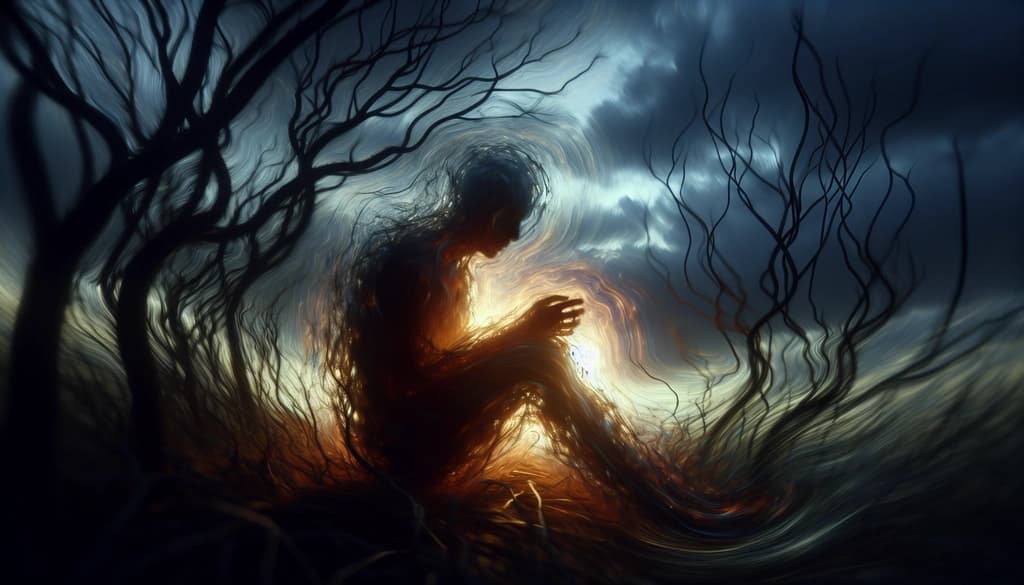How to End Suffering: Opening to Stillness in the Heart of Chaos

When Suffering Touches Every Nerve
To suffer is to be human. Pain ripples through the body, longing clings to the mind, and the heart aches in unseen ways. Suffering appears as anxiety, sorrow, anger, or restless wanting—a grinding sense that something should be different than it is. Sometimes, it takes the form of life’s fractures: a loss, a failure, an illness that lingers without remedy. Why do we suffer is a question threaded through spiritual traditions and human experience, inviting us to look beneath the surface of pain and longing.
Yet the question—how to end suffering—is not only about eliminating discomfort. It is an ancient, spiritual inquiry, pulsing through every tradition: Is there a way not to be broken by pain? Is it possible to find stillness in the swirl, to come home within oneself, even as storms roar aloud? Buddhist thought offers the Meaning of dukkha—the inherent unsatisfactoriness woven through ordinary experience—and the promise that this cycle can truly shift.
The Path Through Difficulty: Spiritual Growth in Hard Times
Difficulty is not merely an obstacle; it is also the ground of spiritual growth. Every wound or wound-up thought can be a doorway if we do not turn away. There’s wisdom in remaining present with what aches, even if the urge to escape rises strong. The Buddha’s Four noble truths explained this—laying a path not just for recognizing suffering, but for understanding its causes and the possibility of its cessation.
You might try:
• Noticing where suffering visits you most—in the mind, breath, heart, or belly. • Sitting quietly with its texture, not judging, not fixing. • Breathing in, acknowledging, “This is hard.” Breathing out, letting go of resistance, even if just for a moment.
Spiritual growth through difficulty is not heroic effort; it is a quiet, steady willingness to meet what is real. Each time you rest your awareness in the rawness of heartbreak or agitation, you soften the grip of suffering’s hold and invite new possibility. In Eastern philosophies, What is moksha points to freedom not from pain, but from the patterns of clinging and aversion that deepen our distress.
Stillness Amid Chaos: Finding a Quiet Center
How to find stillness in chaos? Begin by listening. Chaos, whether loud in the world or inside your mind, will rarely grant you quiet if you wait for silence before turning inward. Instead, gently drop attention into the sensations of breath—its rise and fall—or the subtle hum of your body sitting where you are.
You might notice:
• The warmth of your hands cupped together. • The slow descent of an exhale. • The subtle current of air brushing your cheeks.
These small anchors become a harbor, a space to return to when outer and inner storms threaten to overwhelm. Over time, what feels like chaos may not disappear, but your relationship to it subtly shifts—opening space for peace to seep in, like sunlight between clouds. Seeing how desire breeds longing, and how longing underlies discomfort, is part of this clarity. The Desire and suffering connection invites self-inquiry: What do I yearn for, and can I loosen the grip just a little?
Releasing the Knot: Nirvana as Letting Go
In some traditions, “nirvana” points not to an otherworldly escape, but to a release—the extinguishing of the grasping and clinging that bind us to suffering. This release is not dramatic; it is achingly ordinary. Each time you allow an anxious thought to pass, or soften your resistance to pain, you enact a tiny taste of nirvana. The practice of Letting go of attachment is at the root—loosening your hold on fixed ideas, fears, and endless striving, letting some small measure of freedom trickle in.
Consider:
• Softening your jaw or unclenching your hands when tension takes over. • Whispering inwardly, “I don’t have to fix everything right now.” • Giving space for grief, without needing it to resolve on your timeline.
He sat in his car after the appointment, news heavy, heart trembling. For a few slow breaths he simply felt the ache, not pushing it away or searching for a way out. In this pause, something quiet and vast appeared—a presence beneath the pain, as steady as earth.
The Ripple of Release: How Ending Suffering Touches Life
When you engage in these small acts of seeing and softening, the ripple moves outward. Relationships grow less reactive. The world, still wild and uncertain, feels a little less threatening. You gain resilience—not by erasing pain, but through meeting it with gentle presence. This quality of spiritual liberation defined is not rarefied or distant; it is as near as your next breath, your next act of kindness toward your own hurting heart.
Even science confirms that mindful attention to suffering can ease emotional distress and rewire the mind toward compassion, for oneself and for others. Yet the deepest change is subtle: an inner freedom, a whisper of spaciousness, where once there was only ache.
May you discover, moment by moment, the courage to meet your suffering with softness. Allow yourself to rest in the quiet pools beneath the storms. In this turning toward what is, you plant seeds of release, and the heart remembers it was never truly alone.
